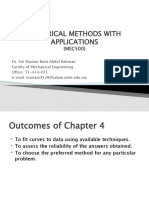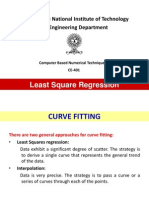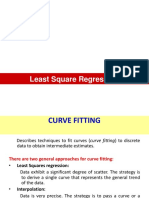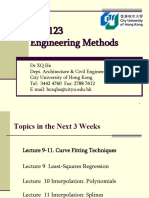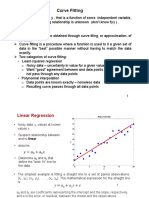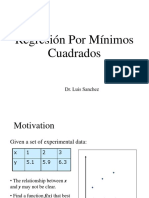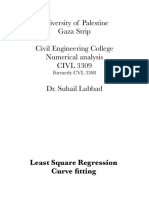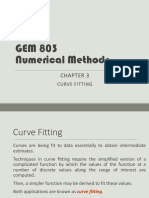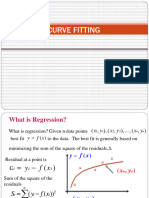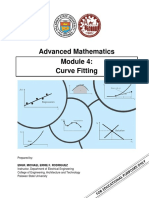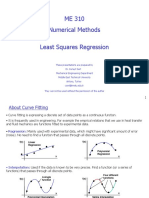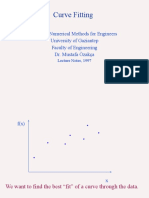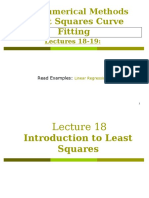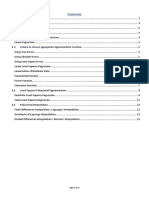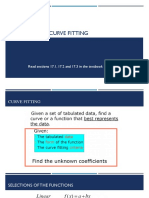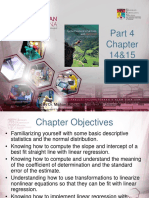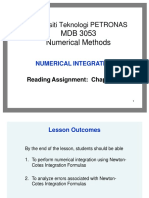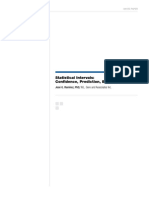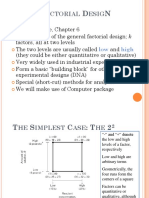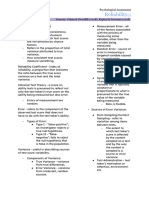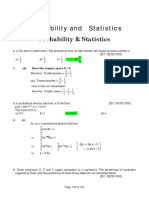0% found this document useful (0 votes)
74 views26 pagesLec4 Numerical Model
Here are the steps to solve this problem:
(a) Using the linear regression formulas:
nΣxiyi - ΣxiΣyi = (1)(0.7) + (2)(2.2) + (3)(2.8) + (4)(4.4) + (5)(4.9) - (1+2+3+4+5)(0.7+2.2+2.8+4.4+4.9) = 29.4 - 30 = -0.6
nΣxi2 - (Σxi)2 = (1)2 + (2)2 + (3)2 + (4)2 + (
Uploaded by
NoorLiana MahmudCopyright
© © All Rights Reserved
We take content rights seriously. If you suspect this is your content, claim it here.
Available Formats
Download as PDF, TXT or read online on Scribd
0% found this document useful (0 votes)
74 views26 pagesLec4 Numerical Model
Here are the steps to solve this problem:
(a) Using the linear regression formulas:
nΣxiyi - ΣxiΣyi = (1)(0.7) + (2)(2.2) + (3)(2.8) + (4)(4.4) + (5)(4.9) - (1+2+3+4+5)(0.7+2.2+2.8+4.4+4.9) = 29.4 - 30 = -0.6
nΣxi2 - (Σxi)2 = (1)2 + (2)2 + (3)2 + (4)2 + (
Uploaded by
NoorLiana MahmudCopyright
© © All Rights Reserved
We take content rights seriously. If you suspect this is your content, claim it here.
Available Formats
Download as PDF, TXT or read online on Scribd
/ 26


